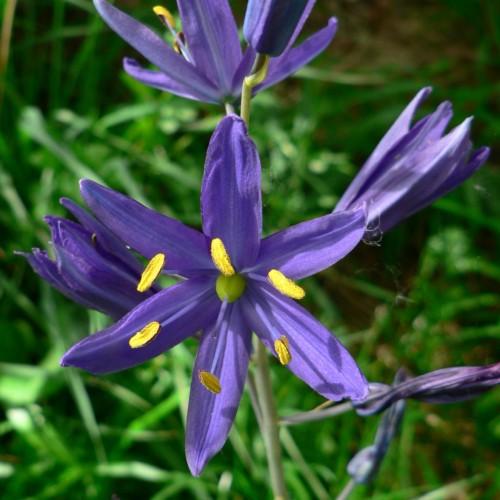
Small Camas
Camassia quamash subsp. quamash
Also Known As - Common CamasWatering:
Minimal
Hardiness Zone:
Sun:
full sun,part shade
Leaf:
Yes
Growth Rate:
Low
Invasive:
Yes
Care Level:
Medium
watering
Erect False Bindweed should be watered regularly and deeply. In general, it prefers a deep thorough watering every week or 2. During the hot summer months, watering may need to be more frequent, especially for plants growing in sandy and/or dry soils. Watering during the early morning is best, as this will give the plant enough time to dry off during the day and also avoid any diseases or fungal issues that can occur in humid conditions. When watering, make sure to thoroughly soak the soil and avoid getting the plant itself wet, as this can cause problems with diseases or fungal issues.
sunlight
Erect False Bindweed (Calystegia spithamaea subsp. stans) are a short-lived perennial wildflower species that thrive in full sunlight. They should be provided with approximately 6 to 8 hours of direct sunlight each day, ideally between the hours of 9 AM to 5 PM. To ensure a healthy growth supply, they may benefit from some afternoon shade in the hottest months.
pruning
Erect False Bindweed should be pruned in the spring or early summer when the plant is actively growing. Start by removing any old or damaged stems and any large woody branches. Once these is done, prune back the remaining smaller branches to desired length. Be sure to make your cuts just above a leaf node to encourage new growth. This species can grow aggressively and require frequent pruning to keep in line with desired shape and size.
